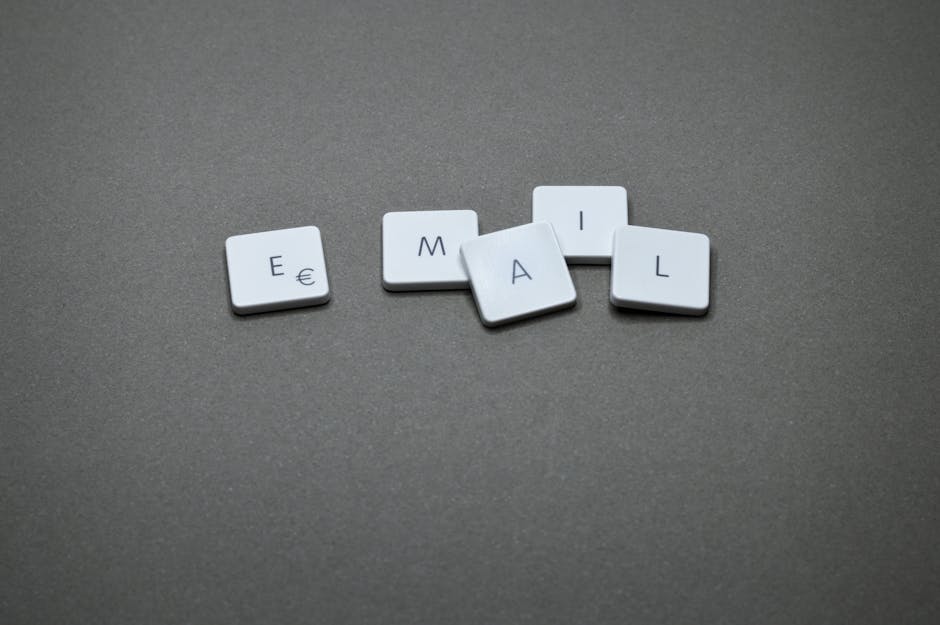Best Practices for Email Marketing Campaigns that Deliver Results
Email marketing remains one of the most effective ways to connect with your audience, but it’s not as simple as pressing “send” on a bulk email. Like a perfectly brewed cup of coffee, the right blend of strategy, timing, and personalization can make all the difference.

Understand Your Audience Like a Close Friend
Imagine hosting a dinner party without knowing who’s coming, would you serve pizza or sushi? Similarly, email marketing works best when you deeply understand your audience. Begin by categorizing your email list according to various factors such as age, user activity, or personal preferences. A pet supply store might send cat-related promotions to feline owners and dog-specific offers to canine enthusiasts. The goal here is relevance.
Data is your ally. Leverage platforms such as Google Analytics or customer relationship management (CRM) systems to gather valuable information about what your customers prefer and how they act. If someone clicked on your last email about eco-friendly products but didn’t purchase, a follow-up offering a discount on those items could nudge them toward a sale.
Write Subject Lines That Beg to Be Opened
Your subject line is the first impression, it’s like the cover of a book at a bookstore. A dull or overly salesy title might get ignored altogether. Instead, aim for curiosity or urgency without being misleading. For instance, “You’re Missing Out on These Exclusive Deals” or “Your 24-Hour Access Starts Now” grabs attention without resorting to gimmicks.
Avoid overloading your subject line with caps or too many exclamation marks. Not only does this look unprofessional, but it can also trigger spam filters. Think conversational yet compelling; something you’d want to open if it landed in your own inbox.
Personalization Is the Name of the Game
No one wants to feel like just another number in your database. Incorporating personal elements, such as greeting individuals by their first names, can make a substantial difference. But personalization doesn’t end there. Incorporate interactive content to customize emails according to previous actions or geographical information. An online clothing retailer might promote winter coats to customers in colder regions and lightweight jackets to those in milder climates.
Even small gestures matter. A birthday email with a special discount not only feels thoughtful but also incentivizes action. According to Experian Marketing Services, birthday emails have a 481% higher transaction rate than promotional emails sent throughout the year (Experian).
Content That Educates and Engages
Think about emails you’ve enjoyed receiving, they probably didn’t scream “Buy now!” Instead, they provided value. From offering instructional guides and revealing insights into your brand's inner workings to providing specialized advice suited to your sector, the material you create should connect meaningfully with what your audience finds valuable and engaging.
If you’re running a fitness business, Include actionable advice like “5 Quick Workouts You Can Do at Home.” Then naturally tie it back to what you’re offering (such as premium fitness classes) to keep readers both engaged and informed.
Visual elements also matter. A clean design with high-quality images can break up text and make the email more visually appealing. Just don’t go overboard; cluttered designs can overwhelm readers and distract from your main message.
The Timing Puzzle: When and How Often?
The timing of your emails plays a huge role in their success. Dispatching emails at 2 AM could be less effective unless your aim is to reach night owls! Consider testing different times aligned with your audience's preferences, as platforms such as Mailchimp provide insights to identify the best moments for sending messages.
Frequency matters too. Bombarding subscribers daily can lead to fatigue (and unsubscribes), while sending emails too infrequently might make people forget about you altogether. Strike a balance, perhaps weekly updates if you’re an e-commerce brand or monthly newsletters for more informational campaigns.
A/B Testing: The Secret Sauce
Wouldn’t it be great if you could test two versions of an email and see which performs better before committing? That’s exactly what A/B testing allows you to do. Split your list into two groups and experiment with different subject lines, images, or call-to-action buttons.
Try testing “Shop Our Fall Sale” against “Your Fall Favorites Are Here!” Which one garners more opens? Over time, these insights will help refine your strategy for maximum impact.
Don’t Neglect Mobile Optimization
More than half of all emails are opened on mobile devices (Statista). If your campaign isn’t optimized for smaller screens, you risk losing half your audience before they even read the first line. Responsive design adapts images and text to maintain clarity and legibility on various devices.
Avoid using overly large images or tiny fonts that require users to pinch and zoom. Test emails across different devices before hitting send, it could make all the difference between engagement and deletion.
The Power of Analytics
Email marketing doesn’t end once you hit "send." Monitoring performance metrics like open rates, click-through rates (CTR), and conversion rates provides invaluable feedback for future campaigns. If an email has high open rates but low CTRs, it could signal that while the subject line was enticing, the content inside fell flat.
Most email marketing platforms provide detailed analytics dashboards where you can drill down into these numbers. Use this data to tweak everything from design elements to messaging tone for better results next time around.
Building Trust Through Consistency
No relationship thrives on inconsistency, not even digital ones! Establishing trust means delivering on promises made during sign-up (e.g., weekly newsletters or exclusive deals). Stick to your schedule so subscribers know when to expect your emails.
Steer clear of making exaggerated promises; honesty is crucial in this context. If someone subscribed expecting monthly updates but gets bombarded with daily promotions instead, they’ll likely hit "unsubscribe" faster than you can say “email marketing.”
Email marketing isn’t just about selling, it’s about building relationships over time. Approach each campaign with this mindset and watch as engagement grows naturally from there.